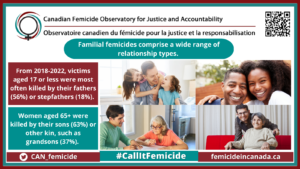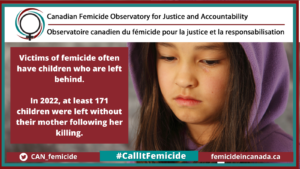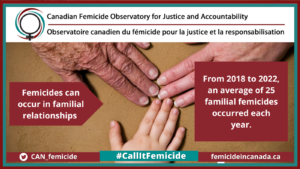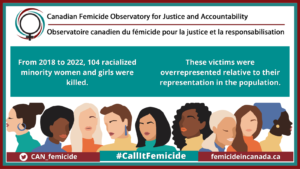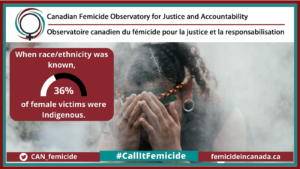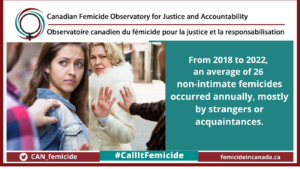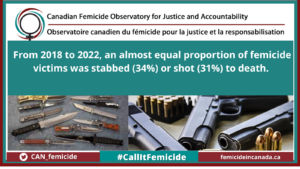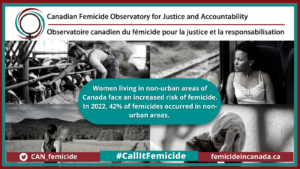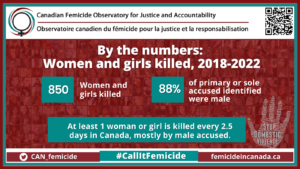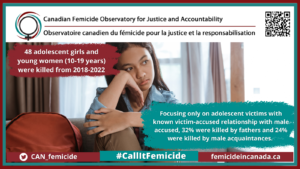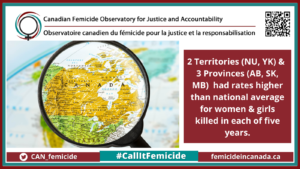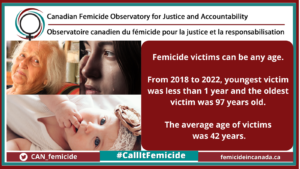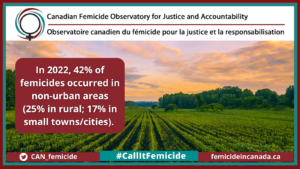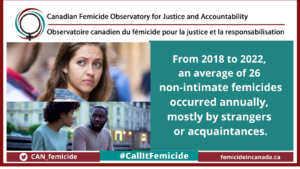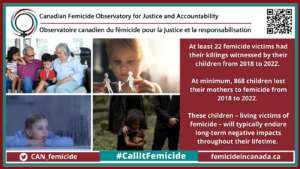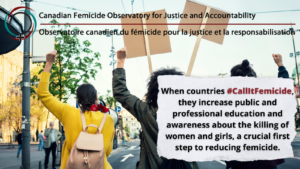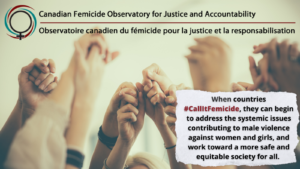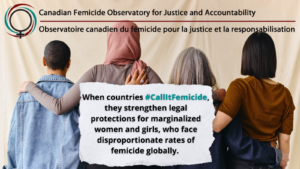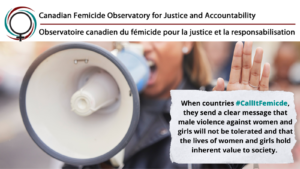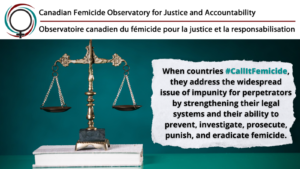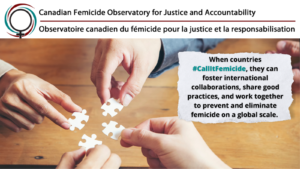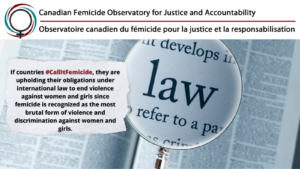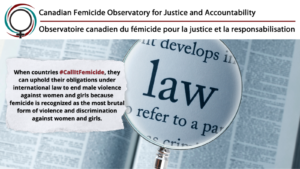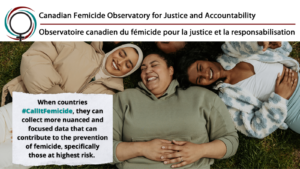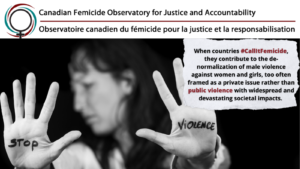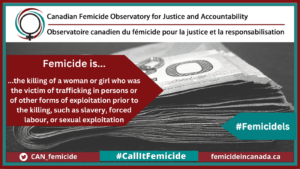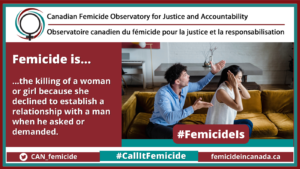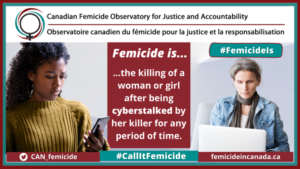Social Media as Primary Prevention
Social media campaigns and related images have become powerful tools to raise awareness about important issues, such as femicide. Femicide is the killing of women and girls because of their sex or gender, and it is a global problem that affects millions of lives. According to the UN, between five and six women are killed every hour by someone they know.
A core goal of the Canadian Femicide Observatory for Justice and Accountability is primary prevention of femicide by increasing education and awareness about femicide in Canada and globally. In doing so, in addition to our reports and related research, we invest much time in creating social media campaigns and images that can help members of the public, professionals, and governments at all levels understand more clearly why it is important to recognize femicide as a distinct form of homicide.
Prevention requires that we recognize and name the problem – that we #CallItFemicide.
To that end, we have engaged in various social media campaigns to help increase knowledge about femicide and the contexts indicative of femicide. For example, #FemicideIs highlights the different risk factors and contexts that surround femicide. We also have created a series of Canadian and global images that underscore the various reasons why it is important to recognize femicide as a distinct form of violence. Finally, each year, we create images that help to highlight key findings about trends and patterns in femicide documented in our reports; most recently, focusing on our 5-year review released early in 2023.
We encourage everyone to download and share these images widely to help contribute to social change because social media can be used as an effective mechanism for primary prevention if done with thought and sensitivity as outlined below.
Not all social media images are respectful or effective in conveying the message of femicide awareness. Some images may be graphic, sensationalized, or victim-blaming, which can harm the survivors and families of the victims and perpetrators, as well as the general public. Therefore, it is important to follow some guidelines when creating and sharing social media images about femicide awareness.
First, avoid using images that show violence, blood, or corpses. These images can be triggering, traumatizing, or desensitizing for the viewers. Furthermore, they do not honour the dignity of the victims. Instead, for example, use images that show the faces, names, or stories of the victims, or symbols or images which represent solidarity and justice.
Second, avoid using images that blame the victims or justify the perpetrators’ actions. These images can reinforce harmful stereotypes, myths, or attitudes that contribute to femicide. Instead, use images that challenge the root causes of femicide, such as sexism, misogyny, or patriarchy.
Third, avoid using images that are generic or irrelevant. These images can dilute the message or distract from the issue. Instead, use images that are both specific and relevant to the context and audience of your social media campaign. For example, use images that reflect the local statistics, laws, or contexts that are indicative of femicide.
By following these guidelines, you can create or share social media images that are respectful and effective in raising awareness about femicide.
Remember that social media images are not enough to end femicide; they are only a means to start a conversation and inspire action. To prevent and eliminate femicide, we need to work together to change the social norms and structures that enable it.

